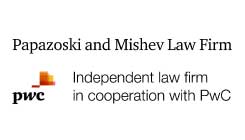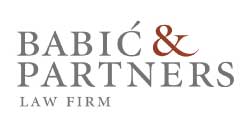In The Corner Office, we ask Managing Partners at law firms across Central and Eastern Europe about their backgrounds, strategies, and responsibilities. With managing firm clients being a critical aspect of firms’ operations, we asked: What are the three most important elements when onboarding a new client?
Kostadin Sirleshtov, CMS Sofia: These days the process of onboarding a client is much more complicated, especially for large international law firms.
The first and most important element when onboarding a new client is to check whether the client or any related parties are not subject to sanctions or covered by any conflicts. Conflicts alone are extremely complicated in large law firms, but the recent sanctions following the war in Ukraine and others are making the process even more complicated. Furthermore, some law firms have self-imposed stricter-than-standard conflict and risk assessment procedures in order to comply with a standard of conduct, which is higher than the minimal one required.
The second element when onboarding the client is to register the client, which involves investigating any specific requirements that the client has – invoicing, terms of payment, etc. These days we have many clients that do e-billing, which is complicated and requires special focus by the firm’s revenue team.
The third element in the onboarding procedure is the most pleasant one and it is related to the introduction of the teams and the internal instructions. It contains the very important kick-off calls and meetings, the introduction of the unique client reference number, the matter numbers, etc.
Pavel Hristov, Hristov & Partners: First, establish quick, comfortable, and reliable communication channels – designate contact persons and draw up clear communication protocols. Secondly, agree on the scope of work and desired outcome(s), KPIs, team(s), budgets/costs, and adjustment protocols, if changes are required going forward. Take measures to manage expectations in terms of outcome, time, and costs. Third, no conflict of interest under any circumstances. We would not engage with a most desirable new client, if there would be a conflict with the interests of one of our existing clients. Greed may not compromise our duty. The ultimate purpose is to lay the foundation for a lasting relationship of trust that will grow in time from the start.
Tomas Bagdanskis, Widen: Today’s customers expect convenience and consistency at every stage of their journey with law firms. In fact, 32% of customers say that even one bad experience can be a reason to walk away from a brand they love. Customer onboarding is one of the most important processes for every business as it is a clear sign to customers whether they’ve made the right decision in working with you.
The three most important elements when onboarding new clients are: First, clarifying the expectations of the client, providing a clear legal strategy, and being open about the chances for achieving those expectations. Second, agree on the manner of communication – defining what constitutes a timely response for sharing status updates, establishing the appropriate channels for sharing them, and assigning a contact person for urgent matters. Third, clearly define the criteria for calculating fees. Generally, we should focus on value delivery and make all processes in the client journey easy for the customer!
Ivana Ruzicic, PR Legal: When onboarding a new client in our law firm, three crucial elements include:
First, understanding the client’s business and needs – in our law firm, the initial step involves thorough comprehension of the client’s business operations, goals, and requirements. This understanding lays the foundation for tailored solutions and effective communication throughout the partnership.
Second, analyzing and addressing weaknesses – conducting a detailed analysis to identify any weaknesses or inefficiencies in the client’s operations is vital. Addressing these issues promptly helps enhance efficiency, mitigate risks, and improve overall performance.
Third, allocating a dedicated team – assigning a dedicated team to the client’s account fosters trust and ensures personalized support. This team should possess the expertise and resources necessary to address the client’s needs promptly and effectively, thereby building a strong and enduring client relationship.
Balazs Karsai, Nagy es Trocsanyi: The three most important things that we do in the context of onboarding a new client are: (1) conflict check – checking whether there is a conflict of interest between our existing clients and/or our firm on the one hand, and the potential new client on the other hand; (2) AML screening – required by law with some exceptions; and (3) negotiating the terms and conditions of engagement and executing the engagement agreement.
Djura Mijatovic, Zivko Mijatovic & Partners: For a multi-jurisdictional firm like ours, the following three key elements are crucial when onboarding a new client:
(1) Understanding client needs – it’s essential to comprehensively understand the client’s business, industry, and specific intellectual property requirements. This includes recognizing how their needs might differ across the 15 jurisdictions where our firm operates. Tailoring our approach to these unique aspects ensures we provide relevant and strategic legal guidance. (2) Communication and transparency – establish a clear communication channel from the start. This involves outlining the legal processes, expected timelines, and any jurisdiction-specific considerations. Regular updates and transparent communication foster trust and help manage expectations, ensuring the client feels informed and supported throughout their legal journey. (3) Team alignment – given our presence in multiple jurisdictions, the entire team, including lawyers, paralegals, and support staff, must be aligned and aware of the client’s needs and expectations. This coordination ensures that the client experiences seamless service regardless of the complexity of their case or the geographical diversity involved.
Istvan Szatmary, Oppenheim: At Oppenheim, client onboarding is seen as part of the service we provide to our clients, even if it involves more and more administrative tasks. For this reason, we have established a number of guiding principles that should be applied consistently at an early stage in the relationship.
The first principle comes from the IT sector: seamless user experience. Clients should feel that their onboarding process – even if it is onerous – is logical, transparent, and works as they would expect from a user-friendly application.
The second element is the one-stop shop. Clients should only have to deal with administrative issues in a single email, and only with those issues that we cannot resolve ourselves. We should use all our resources to gather the information we need and only ask clients as a last resort – the administrative work should be invisible.
Last but not least, at the beginning of the relationship, the one-stop-shop principle should also be applied to communication: clients should have one point of contact to coordinate all matters so that they do not have to figure out who to contact on a particular issue.
Milos Komnenic, Komnenic & Partners: First, understanding the client’s business, needs, and objectives – we prioritize understanding the client’s industry, business model, and operational nuances. This involves thorough discussions to grasp their needs, their goals, and the specific challenges they face. By understanding these aspects, we can tailor our services to meet their expectations and provide solutions that align with their strategic objectives. If we cannot fully understand the client’s business, we do not proceed with the engagement.
Second, setting clear communication and expectations – establishing clear lines of communication and setting realistic expectations from the beginning is crucial. This includes detailing the scope of work, timelines, costs, and any potential risks involved. Transparent communication helps build trust and ensures that both parties are on the same page, reducing the likelihood of misunderstandings and fostering a positive working relationship.
Third, ensuring an efficient onboarding process and documentation – this includes efficiently handling all necessary documentation, ensuring compliance with legal and regulatory requirements, and integrating the client’s information into our systems seamlessly. A streamlined process demonstrates our professionalism and commitment to providing a high level of service right from the beginning.
Tomasz Stasiak, Wolf Theiss Poland: Onboarding is a two-way process that allows the adviser to get to know the client and the client to get to know the adviser. Therefore, the first and most important objective of onboarding is to establish appropriate communication with the client. This typically involves multiple communication channels at different levels to ensure that communication is fast, accurate, and effective. Once this is achieved, the advisor should learn as much as possible about the client’s objectives, strategy, and internal processes. This helps to ensure that the service is actually useful to the client, while the service delivery helps to strengthen the relationship between the client and the advisor. This is also the basis for the third stage of onboarding – the most challenging but also the most rewarding for the advisor – identifying the client’s blind spots. Warning the client of the consequences of their blind spots and helping them to address them is the most value-added role of the advisor.
Bernhard Hager, Eversheds Sutherland Slovakia: Formal, financial, and relationship onboarding. Subject to local and international mandatory rules, our formal onboarding process comprises background checks such as KYC or AML checks. We bought a special program for sanctions checks and we do global conflict checks. When everything is cleared, clients have to confirm our engagement letter and our terms and conditions in writing. Our financial onboarding includes discussions about the entity for receiving our invoices, matter numbers, billing details, etc. However, the most important is the relationship onboarding – bringing the right people together so that on both sides experts who are not only good in their field of expertise but also are able to positively interact and communicate are involved. It happened already, that after a bumpy start, the change of the contact person on our or client’s side helped to establish a long-lasting relationship.
Sergiu Bivol, Vernon David: Onboarding a new client is all about building a happy and successful working relationship. The best way to start such a relationship is to have in mind the following elements:
Exchanging of information – to give your client the best service, you must have a good understanding of the client’s assignment and what they need. The most effective way to get to know the client’s needs, wants, and expectations, is by asking clarification questions. Sending the client a general presentation of the law firm is an excellent way to provide a potential client with information about your business, increase the client’s confidence in your expertise, and encourage them to use your services.
Holding an onboarding meeting – once you’ve gathered the information you need, you’ll want to have a face-to-face consultation with the client. This is an opportunity to establish a friendly working relationship and pave the way for open communication in the future. However you choose to structure your meeting, what’s most important at this stage is that you take detailed notes. If you’re hosting a video call, it might be a good idea to record it. This will ensure you have all the information you need to draw up your work plan.
Defining a clear scope of work – irrespective of whether you send the client a proposal first or the draft of a CLA, it is most important to define a very clear scope of work. It’s crucial to have the scope very well defined from the beginning, because it will help maintain a transparent, correct, and long-term relationship with the client, and will diminish payment risks.
Octavian Popescu, Popescu & Asociatii: First of all, establish clear communication. This means understanding the client’s needs, objectives, and concerns, as well as clearly explaining the services you provide, the timelines, depending on the project’s complexity, and the expected outcomes. Clear expectations surely help to avoid misunderstandings and establish a solid foundation for a strong and long-term partnership. Ensuring a transparent communication process, on both sides, represents the basis of a successful collaboration.
A clear and efficient communication process is not possible without thorough research and understanding of every client’s business and industry as a whole. You need to take time to comprehensively understand not just the client’s business and industry, but also any specific legal, economic, or social challenge. This deep understanding allows us to tailor the best services and the right solutions to the client’s unique needs, providing targeted legal advice and anticipating any potential risks. It also demonstrates the law firm’s commitment to providing value beyond basic legal services.
Last but not least, building trust is essential for a successful partnership. This involves not only demonstrating competence and expertise in the legal field but also being responsive, reliable, proactive, and adaptable to changes.
Pal Jalsovszky, Jalsovszky: First you need to run the compulsory KYC procedure. Although I would not consider it as one of the most important elements of onboarding, it is a must that needs to be adhered to. We also have our internal checklist for financial and controlling purposes. Who will be the party to the invoice? HUF or EUR? One-off or regular? What is the source of the engagement? Which area does the advisory belong to? Should it be presented in our submissions? Etc. All these questions may be painful at a point when you are already eager to give advice to a client but it is still the best time to complete this homework. And finally, there are various business issues that need to be decided: who would be the best person within the organization to run the advisory work, shall we ask for a retainer from the client, and the like.
Borivoj Libal, Eversheds Sutherland Czech Republic: When onboarding a new client, three crucial elements come to mind. First, it is essential that our firm has the required expertise in the relevant area of law and ideally within the client’s specific sector. This ensures that we can provide high-quality service tailored to their unique needs.
Second, conducting a thorough background check is critical, especially for a multinational firm. This includes KYC and AML procedures to ensure ongoing compliance with legal standards and to mitigate potential risks associated with the client.
Finally, it is important to reach a clear consensus on the scope and depth of the legal services provided and the related pricing. Transparency in these aspects ensures that the client feels they have received top value for their money, fostering satisfaction and encouraging repeat business.
By focusing on these elements, we not only facilitate a smooth onboarding process but also lay the foundation for a strong, trust-based client relationship.
This article was originally published in Issue 11.5 of the CEE Legal Matters Magazine. If you would like to receive a hard copy of the magazine, you can subscribe here.

























